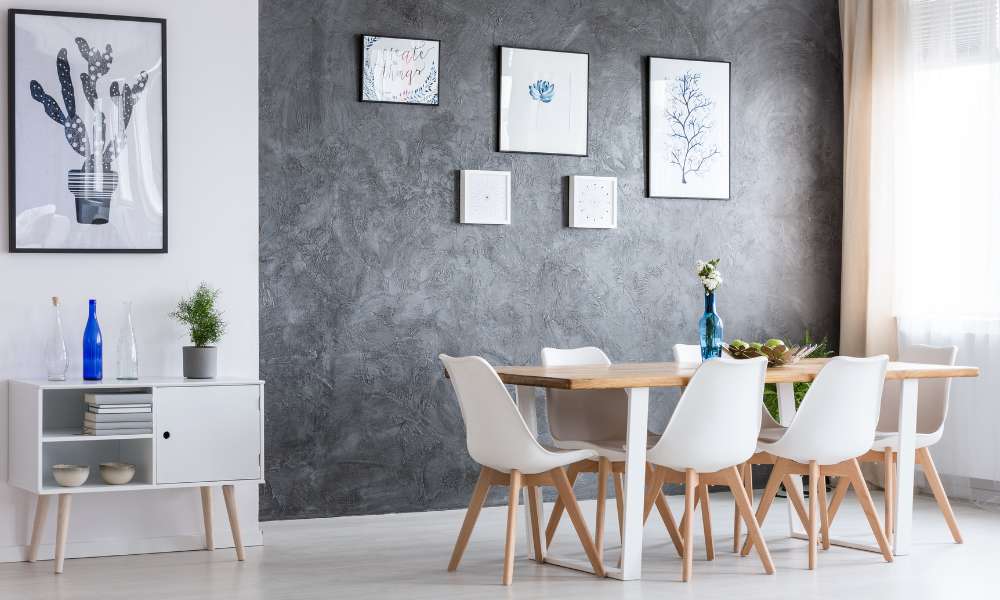Are you looking to breathe new life into your dining room? One of the most transformative and budget-friendly ways to revamp your space is by painting your dining room table. Whether you prefer a sleek modern look, a charming vintage vibe, or a burst of vibrant color, painting your table offers endless possibilities for personalization and creativity. In this article, we’ll explore a variety of painted dining room table ideas that can inspire your next DIY project. From preparation tips to choosing the perfect color scheme, and creative painting techniques to maintenance advice, we’ll guide you through each step of the process. Whether you’re a seasoned DIY enthusiast or a novice looking to try your hand at furniture painting, this guide will provide you with all the inspiration and information you need to create a stunning centerpiece for your dining room.
Section 1: Preparing Your Dining Table for Painting
Cleaning and Sanding
Before you begin painting your painted dining room table, it’s crucial to ensure the surface is clean and smooth. A well-prepared surface will help the paint adhere better and result in a more professional finish. Start by thoroughly cleaning the table with a mild detergent and warm water to remove any grease, dirt, or old wax. Once the table is dry, sand it using medium-grit sandpaper to remove the old finish and create a slightly rough surface for the primer to adhere to. After sanding, wipe down the table with a damp cloth to remove any dust and allow it to dry completely.
Choosing the Right Paint and Tools
Selecting the right type of paint and tools is essential for achieving a durable and attractive finish. For furniture, chalk paint and latex paint are popular choices due to their durability and ease of use. Chalk paint provides a matte finish and requires minimal prep work, while latex paint offers a wide range of colors and a smooth finish. In addition to choosing the right paint, you’ll need the appropriate tools. Brushes and rollers are suitable for most projects, but for a more even finish, consider using a spray gun. Ensure you have high-quality brushes to avoid bristle marks and achieve a professional look.
Priming the Table
Using a primer is a vital step in preparing your painted dining room table for painting, as it helps the paint adhere better and provides a smooth base. Primer also helps to seal any stains or imperfections on the table’s surface, ensuring a uniform finish. Apply the primer in thin, even coats using a brush or roller, and allow it to dry completely between coats. Lightly sand the primed surface with fine-grit sandpaper to remove any brush strokes or drips, then wipe it down with a damp cloth to remove dust. This preparation will ensure that your painted dining table looks flawless and lasts for years to come.
Section 2: Choosing a Design and Color Scheme
Solid Colors
Choosing a solid color for your dining room table can significantly impact the overall ambiance of your space. Popular color choices like classic white, deep navy, or bold black can create a sophisticated and timeless look, while brighter hues like turquoise or mustard yellow can add a fun and vibrant touch. For a serene and calming atmosphere, consider pastel shades such as mint green or blush pink. These solid colors not only enhance the dining room’s aesthetic but also provide a versatile backdrop that can complement various decor styles.
Patterns and Stencils
Incorporating patterns and stencils into your table design can elevate its appearance and add a unique touch. Stripes, chevron patterns, and geometric shapes are excellent choices for creating a modern and dynamic look. For a more intricate design, stencils can be used to apply detailed motifs such as floral patterns or damask prints. Using stencils allows you to achieve professional-looking results without the need for advanced painting skills. This approach can transform a plain table into a statement piece that reflects your style and creativity.
Distressed and Vintage Looks
For those who prefer a rustic or vintage aesthetic, distressing techniques can give your dining table an aged and charming look. Techniques such as sanding specific areas, applying wax, or using a crackle glaze can create a worn and weathered effect. Colors that work well for distressed finishes include soft neutrals like beige, antique white, and light gray, as well as muted pastels. These hues enhance the vintage feel and blend seamlessly with shabby chic or farmhouse decor. Achieving a distressed finish not only adds character to your table but also makes it a unique focal point in your dining room.
Section 3: Creative Painting Techniques
Ombre and Gradient Effects
Creating an ombre effect on your dining table can add a sophisticated and stylish touch to your decor. To achieve this look, start by selecting a range of shades from the same color family. Begin painting with the darkest shade at the base and gradually blend it into lighter shades as you move upwards. Use a clean, dry brush to blend the colors smoothly at the transition points. This gradient design not only adds visual interest but also creates a sense of depth and movement, making your dining table a standout piece.
Two-Tone and Contrast
For a striking and modern look, consider combining two contrasting colors on your dining table. This technique can be used to highlight different parts of the table, such as painting the tabletop one color and the legs another. Popular combinations include black and white for a classic look, or bold pairings like navy and gold for a touch of elegance. The placement of contrasting colors can emphasize the table’s structure and design, adding a dynamic and visually appealing element to your dining room.
Artistic and Hand-Painted Designs
Encouraging hand-painted motifs and artwork on your dining table allows for a truly personalized and unique design. Whether you draw inspiration from nature, favorite art pieces, or personal interests, hand-painting your table can transform it into a canvas for self-expression. Consider incorporating floral motifs, abstract patterns, or even a family crest. This artistic approach not only adds a personal touch to your dining room but also makes the table a conversation piece that reflects your style and creativity.
Section 4: Protecting and Maintaining Your Painted Table
Sealing and Finishing
After investing time and effort into painting your dining room table, it’s crucial to protect your work with a sealant. Using a sealant not only preserves the paint but also adds durability, ensuring your table withstands daily use. There are various finishes to choose from, such as matte for a subtle, sophisticated look, or gloss for a shiny, polished appearance. Apply the sealant in thin, even coats, allowing each layer to dry completely before adding the next. This step will help protect your table from scratches, spills, and general wear and tear.
Care and Cleaning Tips
Maintaining the beauty of your painted dining table requires regular care and proper cleaning techniques. To keep the paint looking fresh, use a soft cloth or sponge with mild soap and water for routine cleaning. Avoid using harsh chemicals or abrasive cleaners, as these can damage the paint and sealant. Additionally, it’s a good idea to use placemats and coasters to protect the surface from heat, moisture, and stains. By following these best practices, you can ensure that your painted table remains a stunning centerpiece in your dining room for years to come.
Section 5: Inspiring Examples and Case Studies
Real-Life Examples
Seeing is believing, and real-life examples of painted dining room tables can provide the inspiration you need to start your project. Many homeowners have transformed their dining spaces with creative paint designs, sharing photos and stories of their success. From bold, colorful tables that brighten up a room to subtle, elegant designs that add a touch of sophistication, these examples showcase the endless possibilities and the dramatic impact a fresh coat of paint can have.
Expert Tips and Recommendations
Learning from the pros can make a significant difference in the outcome of your project. Interior designers and DIY experts offer valuable advice on selecting colors, techniques, and materials. Their recommendations can help you avoid common pitfalls and achieve professional-looking results. Whether it’s choosing the right type of paint, mastering the art of blending colors for an ombre effect or applying the perfect sealant, expert tips can guide you through each step of the process with confidence.
Reader Submissions
Engaging with a community of DIY enthusiasts can be incredibly motivating and rewarding. By encouraging readers to share their painted table projects, you create a platform for creativity and the exchange of ideas. Reader submissions can provide fresh perspectives, unique designs, and practical tips based on real experiences. This interactive approach not only fosters a sense of community but also inspires others to embark on their own dining table makeover projects, showcasing the collective creativity and resourcefulness of DIYers everywhere.
Conclusion
Painting your dining room table is a fantastic way to refresh your space and express your creativity. Whether you choose a solid color, a patterned design, or a vintage distressed look, the possibilities are endless. With proper preparation, the right materials, and a bit of inspiration from real-life examples and expert tips, you can achieve stunning results. Don’t forget to protect your work with a sealant and follow maintenance tips to keep your table looking beautiful for years to come. Start your painting project today and transform your dining room into a stylish, personalized haven.





